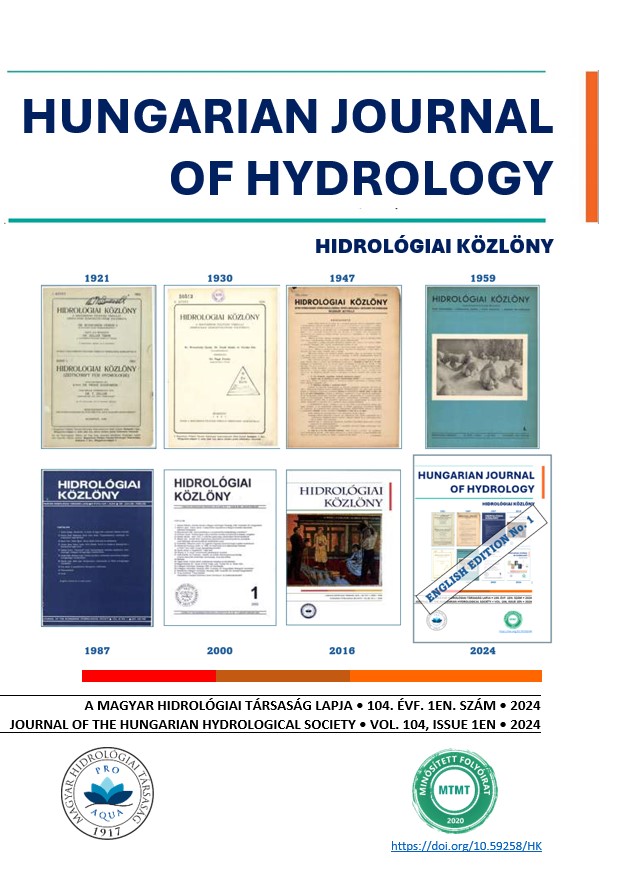The effect of expanded perlite and metakaolin on the physicochemical properties of collapsible soils
Abstract
Collapsible soils, such as loess, are a kind of problematic soil that is naturally unsaturated and withstands high loads at their natural moisture content, but unexpectedly collapses when wet and saturated, creating a risk to buildings constructed on it. This study highlights the effect of chemical stabilizers, including perlite and metakaolin, on the physicochemical behavior of collapsible soils, especially Zeta potential measurement, and the soil’s morphology. The properties of natural soil were compared to those of treated soil using a set of Zeta potential measurement tests. Furthermore, scanning electron microscopy (SEM) analysis was used to validate the results. According to the results, perlite and metakaolin changed the loess soil properties. The results showed that the absolute Zeta potential of soils increased after adding perlite and metakaolin, which indicated a higher dispersity of soils mixed with perlite or metakaolin. The scanning electron microscope (SEM) indicated that untreated samples had a loose structure with extensive pores, whereas treated samples had a dense and uniform structure with particle rearrangement. The flocculation and agglomerations in the soil matrix, which are a significant contributing factor to the mechanical property enhancement of the metakaolin-stabilized samples, were confirmed by SEM images. According to the microstructure and product composition analyses, the calcium-aluminate-silicate hydrate (CASH) generated by the metakaolin enhanced cementation between the flake units of the plain soil, and the soil structure of the plain soil stabilized by the metakaolin was denser.
References
Ahmed, M.D., Hamza, N.A. (2015). Effect of metakaolin on the geotechnical properties of expansive Soil. Journal of Engineering, 21(12), pp. 29-45. https://doi.org/10.31026/j.eng.2015.12.03
Al Bakri, A.M., Kamarudin, H., Bnhussain, M., Nizar, I.K., Rafiza, A.R., Zarina, Y. (2012). The processing, character-ization, and properties of fly ash-based geopolymer concrete. Rev. Adv. Mater. Sci, 30(1), pp. 90-97.
Calik, U., Sadoglu, E. (2014/a). Engineering properties of expansive clayey soil stabilized with lime and perlite. https://doi.org/10.12989/gae.2014.6.4.403
Calik, U., Sadoglu, E. (2014/b). Classification, shear strength, and durability of expansive clayey soil stabilized with lime and perlite. Natural hazards, 71(3), pp. 1289-1303. https://doi.org/10.1007/s11069-013-0950-1
Farahani, E., Emami, H., Fotovat, A., Khorassani, R. (2019). Effect of different K: Na ratios in soil on a dispersive charge, cation exchange, and Zeta potential. Eur. J. Soil Sci. 70 (2), pp. 311-320. https://doi.org/10.1111/ejss.12735
Hanegbi, N., Katra, I. (2020). A clay-based geopolymer in loess soil stabilization. Applied Sciences, 10(7), 2608. https://doi.org/10.3390/app10072608
Khodabandeh, M.A., Nokande, S., Besharatinezhad, A., Sadeghi, B., Hosseini, S.M. (2020). The effect of acidic and alkaline chemical solutions on the behavior of collapsible soils. Periodica Polytechnica Civil Engineering, 64(3), pp. 939-950. https://doi.org/10.3311/PPci.15643
Khodabandeh, M.A., Nagy G. (2022). Collapse potential of loess soils contaminated by synthetic and landfill leachates. In Symposium of the Macedonian Association for Geotechnics (pp. ISRM-MAG). ISRM.
Khodabandeh, M.A., Nagy G., Török Á. (2023a). Stabilization of collapsible soils with nanomaterials, fibers, poly-mers, industrial waste, and microbes: Current trends. Construction and Building Materials, 368, 130463. https://doi.org/10.1016/j.conbuildmat.2023.130463
Khodabandeh, M.A., Kopecskó K., Nagy G. (2023b). Strength properties of collapsible soils stabilized by innovative materials, Proceedings of the 17th Danube European Conference on Geotechnical Engineering (17DECGE), Bucha-rest, Romania.
Li, S., Li, Y., Huang, X., Hu, F., Liu, X., Li, H. (2018). Phosphate fertilizer enhancing soil erosion: effects and mech-anisms in a variably charged soil. Journal of Soils and Sediments, 18(3), pp. 863-873. https://doi.org/10.1007/s11368-017-1794-1
Mehta, A, Siddique, R. (2017). Sulfuric acid resistance of fly ash-based geopolymer concrete. Constr Build Mater 2017, 146, pp. 136-43. https://doi.org/10.1016/j.conbuildmat. 2017.04.077
Muhammad, A., Yusuf, A., Umar, M. (2020). Assessment of lateritic soil stabilized using metakaolin. Journal of Ge-otechnical Studies, 5(1), pp. 15-26. http://doi.org/10.5281/zenodo.3676443
Nokande, S., Khodabandeh, M.A., Hosseini, S.S., Hosseini, S.M. (2020). Collapse Potential of Oil-Contaminated Loessial Soil (Case Study: Golestan, Iran). Geotechnical and Geological Engineering, 38(1), pp. 255-264. https://doi.org/10.1007/s10706-019-01014-9
Nokande, S., Khodabandeh, M. A., Besharatinezhad, A., Nagy, G., Török, Á. (2022). Effect of Oil Contamination on the Behavior of Collapsible Soil. Periodica Polytechnica Civil Engineering, 66(3), pp. 775-784. https://doi.org/10.3311/PPci.19636
Parameswaran, T.G. (2017). Factors Controlling the Dispersivity of Soils and the Role of Zeta Potential (Doctoral dissertation).
Ogila, W.A.M., Eldamarawy, M.E. (2022). Use of Cement Kiln Dust for Improving the Geotechnical Properties of Collapsible Soils. Indian Geotechnical Journal, 52(1), pp.70-85.
Siddiqua, S., Bigdeli, A. (2022). Utilization of MgCl2 solution to control collapse potential of soil. Transportation Geotechnics, 33, p.100731. https://doi.org/10.1016/j.trgeo.2022.100731
Tabarsa, A., Latifi, N., Meehan, C. L., & Manahiloh, K. N. (2018). Laboratory investigation and field evaluation of loess improvement using nano clay–A sustainable material for construction. Construction and Building Materials, 158, 454-463.
Xu, P., Zhang, Q., Qian, H., Yang, F., Zheng, L. (2021). Investigating the mechanism of pH effect on saturated permeability of remolded loess. Engineering Geology, 284, 105978. https://doi.org/10.1016/j.enggeo.2020.105978
Zamani, M., Badv, K. (2019). Assessment of the geotechnical behavior of collapsible soils: a case study of the Mo-hammad-Abad railway station soil in Semnan. Geotechnical and Geological Engineering, 37(4), pp. 2847-2860. https://doi.org/10.1007/s10706-018-00800-1
Zhang, HY., Kodur, V., Wua, B., Cao, L., Wang, F. (2016). Thermal behavior and mechanical properties of geopol-ymer mortar after exposure to elevated temperatures. Constr Build Mater; 109. pp. 17-24. https://doi.org/10.1016/j.conbuildmat.2016.01.043
Zhang, M., Zhao, M., Zhang, G., Nowak, P., Coen, A., Tao, M. (2015). Calcium-free geopolymer as a stabilizer for sulfate-rich soils. Applied Clay Science, 108, pp. pp. 199-207. https://doi.org/10.1016/j.clay.2015.02.029
Copyright (c) 2024 Mohammad Ali Khodabandeh, Katalin Kopecskó, Gábor Nagy

This work is licensed under a Creative Commons Attribution-NonCommercial-ShareAlike 4.0 International License.




